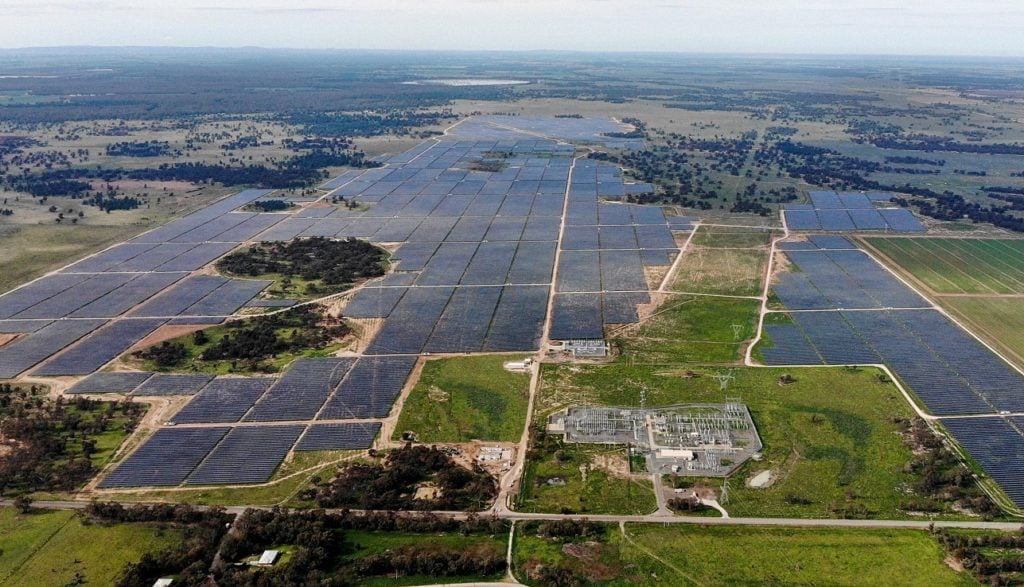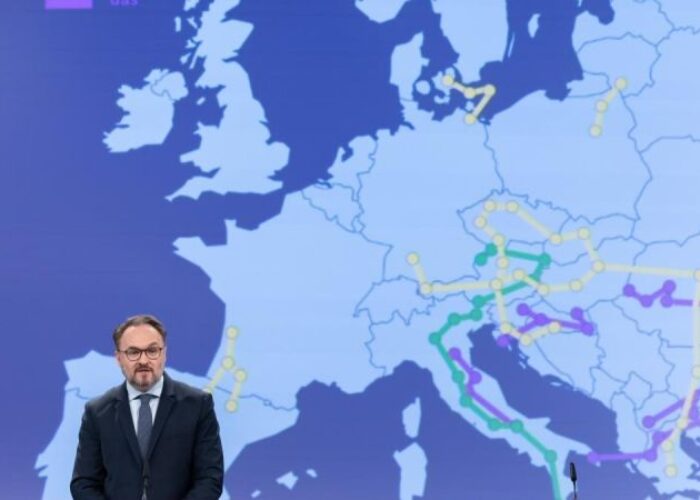
Australia’s solar sector is poised to accelerate deployment as the country’s new government vows to unlock renewables investment, upgrade the grid and bring federal policy more in line with states and territories.
Having been elected to power last month, the Labor government has formally raised the country’s 2030 emissions reduction target to 43% below 2005 levels – up on the previous government’s goal to slash emissions by 26-28% – as it aims to increase renewables penetration in the National Electricity Market (NEM) to 82% by 2030.
Try Premium for just $1
- Full premium access for the first month at only $1
- Converts to an annual rate after 30 days unless cancelled
- Cancel anytime during the trial period
Premium Benefits
- Expert industry analysis and interviews
- Digital access to PV Tech Power journal
- Exclusive event discounts
Or get the full Premium subscription right away
Or continue reading this article for free
New prime minister, Anthony Albanese, pledged after the election to make the country a renewables “superpower”, while energy minister, Chris Bowen, revealed last week that the government wants to “unleash private investment” in renewables. “Australia has the world’s best solar resource and some of the world’s best wind,” Bowen said at the Climate Change Investment and Finance Summit in Sydney.
“A country like Australia should be a renewable energy superpower, running our homes and businesses on cheaper and cleaner power, and exporting it to the world. But instead, we’re a decade behind on the energy transformation.”
The previous government, under the leadership of Scott Morrison, drew flak for being too slow to curb emissions. While it did commit the country last year to reaching net zero emissions by 2050, renewables association the Clean Energy Council said in a report published earlier this year that the government’s refusal to back the target with any meaningful policy support and its assistance for the fossil fuel industry raised many questions about the sincerity of its commitment.
The Clean Energy Council’s report found that while Australia recorded its second-best year for large-scale solar deployment in 2021 – with 1,209MW of projects with a capacity of more than 5MW added – the positive results were clouded by a significant slowdown in the renewables pipeline.
According to the association, a 17% drop in financial commitments for new large-scale renewables projects between 2020 and 2021 was due to policy uncertainty combined with the challenges associated with connecting renewable energy projects to the grid.
“The recent election is a game-changer in terms of policy support for renewable energy,” says Nicholas Aberle, director of energy generation and storage at the Clean Energy Council. “Right now, 3.6GW of capacity is either under construction or has reached financial close, so utility solar’s market share is only going to grow.”
Although Australia’s new emissions reduction target has drawn criticism for being too low, it does bring federal policy more in line with states and territories, many of which have more ambitious climate goals.
Recent years have seen a lot of the drive for energy policy and delivery being done by state governments, according to John Cole, CEO of Australia-based renewables and storage developer Edify Energy. “I think there was a general view [the federal government] had made itself a little bit redundant,” Cole says.
Amid an ongoing energy crisis that has led to the country’s wholesale power market being suspended, federal and state energy ministers agreed to a clean power transition plan earlier this month. “We need more transmission. We need more renewables. We need more storage,” Bowen said at the time.
Cole says that now is a “very good time to be in the clean energy generation space in this country because all the risk is to the upside”.
Edify Energy earlier this month secured project financing for three battery energy storage system projects in New South Wales totalling 150MW/300MWh that will feature grid-forming inverters, allowing them to support the local grid by providing synchronous inertia.
Among the main challenge that policymakers will have to navigate will be expanding the electricity grid so it can handle more renewables.
Labor’s Powering Australia plan earmarks AU$20 billion (US$14.2 billion) to upgrade the country’s electricity grid, while the state of New South Wales announced plans earlier this month to invest AU$1.2 billion in new transmission lines and infrastructure over the next ten years to accelerate the connection of planned renewable energy zones.
However, social license can be an obstacle to such large-scale grid transmission projects. Tim Buckley, director of think tank Climate Energy Finance, says: “We don’t have a regulatory framework that compensates the landowners well when it comes to grid transmission”, meaning there is “enormous farmer resistance”.
In terms of the new government’s policies, Buckley says that although the 43% emissions reduction plan is “nowhere near good enough” the commitment to reach 82% renewables in the NEM by 2030 “is a really ambitious policy”.
“The reality is we’ve wasted a couple of years with the [previous] federal government, so we’ve got to make up for some time,” Buckley says.
“I think the snowball is going to really build now that we’ve got federal-state government alignment.”






